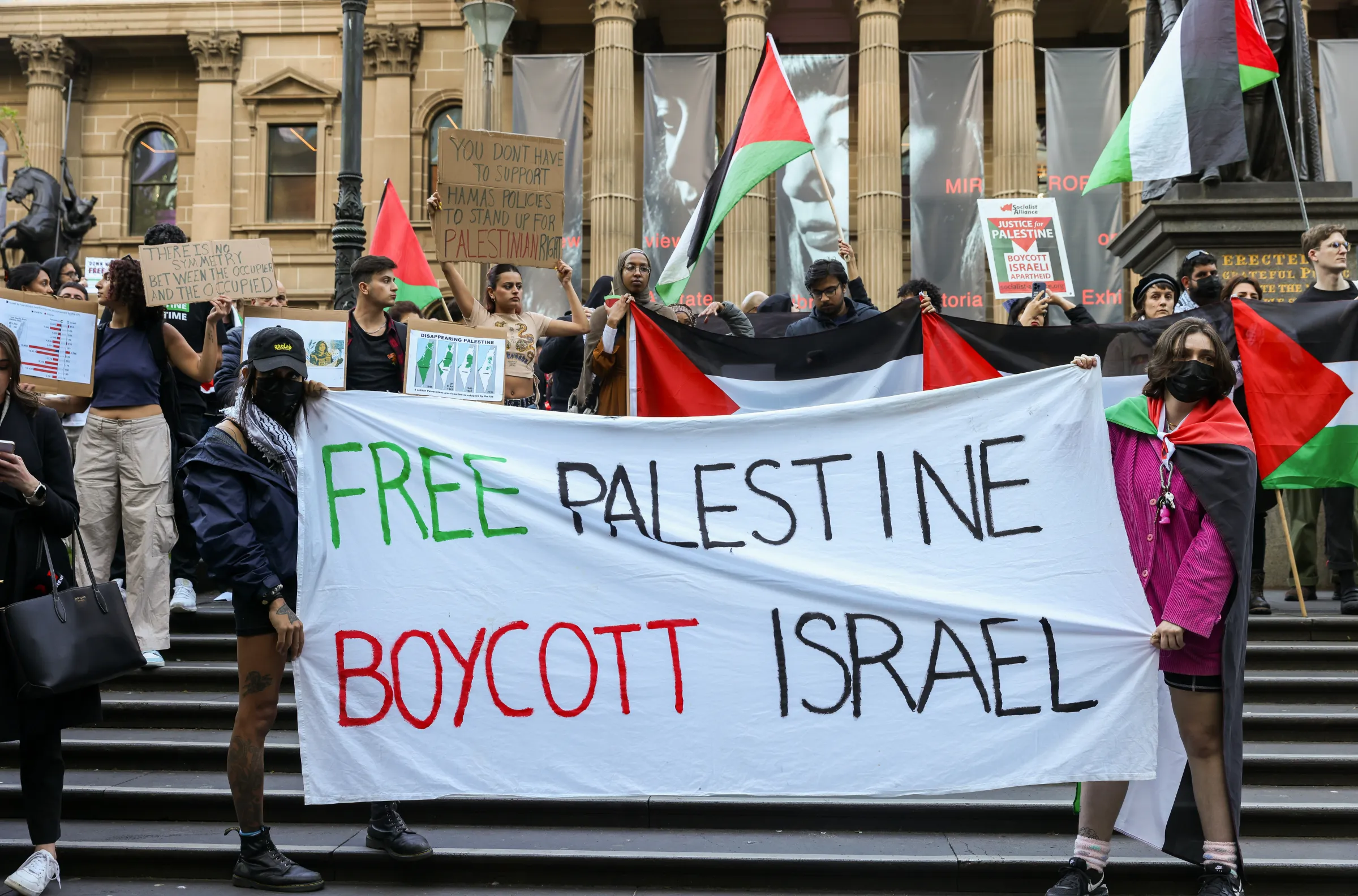Introduction to Boycotts and Their Impact
Boycotts have been a powerful tool for social change throughout history. They give consumers a voice and the ability to hold corporations accountable for their actions. When people unite with a common goal, they can create significant shifts in business practices and policies. The Starbucks boycott is one such movement that has gained traction among those who feel strongly about various issues tied to the coffee giant.
Whether it’s ethical sourcing, labor practices, or environmental concerns, there are plenty of reasons why individuals might rally against Starbucks. If you’re passionate about making your stance known while encouraging positive change within the company, organizing a successful boycott could be your answer.
In this guide, we’ll walk you through every necessary step—from understanding the impact of boycotts to executing your plan effectively—all while ensuring that your efforts resonate widely and lead to meaningful outcomes. Let’s dive into how you can make an impactful statement against Starbucks!
Reasons to Boycott Starbucks
Many consumers are motivated to boycott Starbucks due to its business practices. Some critics point to the company’s tax strategies, suggesting that it exploits loopholes to minimize its contributions. This raises questions about corporate responsibility.
Labor practices also come under scrutiny. Employees have voiced concerns over working conditions and compensation. Reports of inadequate pay and lack of benefits fuel discontent among workers.
Environmental issues play a significant role too. While Starbucks promotes sustainability, some argue that its coffee sourcing methods aren’t as eco-friendly as claimed. Deforestation linked with coffee production poses threats to biodiversity.
Social justice initiatives can be contentious as well. Activists sometimes feel the company’s actions don’t align with their stated values on diversity and inclusion. Such discrepancies lead many customers to reconsider their loyalty.
As these reasons gain traction, more people choose not just what they drink but where their money goes, making their voices heard through collective action against brands like Starbucks.
Researching the Company and Its Practices
Understanding Starbucks requires delving into its practices and policies. Start by examining their supply chain. How do they source their coffee beans? Are they committed to fair trade?
Look into labor practices as well. Investigate employee treatment, wages, and benefits provided by the company. There have been concerns over working conditions in some areas.
Next, consider environmental impact. What steps has Starbucks taken to promote sustainability? Check for initiatives like reducing plastic waste or water conservation efforts.
Don’t forget customer feedback either. Social media platforms are buzzing with opinions on what aspects of the company’s culture resonate positively or negatively with consumers.
Collecting this information will help you build a solid case for your boycott effort while ensuring that your arguments are grounded in facts rather than hearsay. This research can be pivotal in rallying others around your cause effectively.
Planning and Organizing the Boycott
Planning a boycott requires strategy and clear objectives. Start by identifying your main goals. Are you seeking policy changes, ethical practices, or social justice?
Next, assemble a core team of passionate individuals who share your vision. This group will help brainstorm ideas and delegate tasks effectively.
Create a timeline for your campaign to maintain focus. Set key dates for launching the boycott and related events to maximize visibility.
Draft clear messaging that resonates with potential supporters. Make sure it highlights the reasons behind the Starbucks boycott in a straightforward manner.
Utilize digital tools to organize meetings and discussions among supporters. Platforms like Slack or Discord can facilitate real-time communication.
Prepare materials such as flyers or graphics that illustrate your cause visually. These resources will be essential when spreading awareness later on.
Spreading the Word and Gaining Support
To effectively spread the word about a Starbucks boycott, harness the power of social media. Platforms like Twitter, Instagram, and Facebook allow for rapid communication and outreach.
Create engaging content that informs followers about the reasons behind the boycott. Use eye-catching graphics or short videos to convey your message clearly.
Don’t hesitate to leverage local community groups as well. Attend meetings or events where you can discuss your cause in person. Building relationships strengthens support.
Consider creating an online petition. This not only gathers signatures but also raises awareness among those who may not yet know why a boycott is necessary.
Encourage supporters to share their personal stories related to Starbucks’ practices. Real experiences resonate deeply and can motivate more people to join the effort against corporate actions they find unacceptable.
Remember, collaboration with influencers can amplify your reach significantly, bringing even more visibility to your campaign.
Executing the Boycott: Dos and Don’ts
Executing a successful boycott requires careful attention to detail. Start by establishing clear goals. Know what changes you want Starbucks to make.
Communicate your message clearly. Use social media platforms, community boards, and local events to spread the word about the boycott’s purpose.
Engage supporters with informative content. Share articles, videos, and personal stories that highlight why this boycott matters.
However, avoid aggressive tactics or harassment. Peaceful protest is essential for maintaining credibility and support.
Plan organized actions rather than spontaneous ones. Ensure everyone involved knows their role and how they can contribute effectively.
Monitor your progress regularly but don’t obsess over immediate results. Change takes time, so remain patient while keeping the momentum alive through consistent messaging and outreach efforts.
Measuring the Success of the Boycott
Measuring the success of a Starbucks boycott involves looking beyond mere sales figures. Start by tracking social media engagement. Are people talking about the boycott? The volume of hashtags and shares can indicate interest levels.
Next, consider public sentiment. Surveys or polls can provide insights into how attitudes toward Starbucks are shifting. Analyzing online discussions also sheds light on consumer perceptions.
Monitor any changes in company policies or practices that align with your reasons for boycotting. If Starbucks implements new initiatives addressing your concerns, that’s a clear sign of impact.
Look at local store performance if you’re focusing on specific locations. A drop in foot traffic can be a strong indicator that your efforts are resonating within the community. All these metrics combined will give you a clearer picture of whether the boycott is making waves where it counts most.
Alternative Actions to Take Instead of a Boycott
Not everyone believes a boycott is the best route. There are alternative ways to enact change that can be just as effective.
Consider engaging in direct dialogue with Starbucks. Writing letters or emails expressing your concerns can create an impactful connection. Companies often listen when customers voice their opinions.
Another option is supporting local coffee shops or ethical brands aligned with your values. By choosing where you spend your money, you encourage positive business practices without the need for a formal boycott.
Grassroots campaigns raise awareness about pressing issues too. Organizing community events focused on sustainability or fair trade encourages others to think critically about their choices.
Educating yourself and those around you creates informed consumers who demand better practices from all corporations, including Starbucks. Share articles, host discussions, and promote responsible consumption within your social circles for lasting impact.
Understanding the power of boycotts
Boycotts are more than just a rejection of a brand or service. They represent collective consumer power, showcasing how unified voices can drive change. When individuals come together for a common cause, their impact grows exponentially.
Targeting companies with ethical concerns amplifies the message that consumers care about social responsibility and corporate ethics. A successful boycott can force businesses to reconsider their practices.
Historical examples illustrate the strength of this tool; movements have reshaped policies and influenced public perception through organized economic pressure.
In our interconnected world, boycotts gain traction rapidly via social media platforms. Information spreads quickly, mobilizing supporters in real-time.
Every purchase is a vote for what we value as consumers—boycotting sends a clear signal when those values are compromised.
Identifying the reasons for boycotting Starbucks
Boycotting Starbucks often stems from various concerns. These can range from labor practices to environmental impact.
Many consumers cite the treatment of employees as a primary reason. Reports of low wages and insufficient benefits have sparked outrage among advocates for fair labor practices.
Another critical issue is sustainability. Critics point out that while Starbucks promotes itself as an eco-friendly brand, its supply chain may not align with those values. The sourcing of materials like palm oil has raised eyebrows regarding deforestation and habitat destruction.
Social issues also play a role in boycott motivations. Customers express frustration over perceived corporate actions or policies that contradict their personal beliefs, whether it’s political donations or community engagement efforts.
Identifying these reasons is crucial for rallying support and creating a focused message during the boycott campaign. Understanding stakeholders’ opinions will help shape the strategy moving forward.
Researching and gathering support for the boycott
To effectively launch a Starbucks boycott, thorough research is vital. Understand the specific practices or policies that are prompting the call for action. This could include issues related to labor rights, environmental concerns, or corporate ethics.
Once you’ve identified your reasons, shift focus to gathering support. Connect with like-minded individuals who share your passion for change. Utilize community forums and local activist groups to build a coalition.
Social media platforms can amplify your message significantly. Create informative posts outlining why this boycott matters and how it aligns with broader social justice movements. Encourage followers to engage by sharing their own experiences and thoughts on Starbucks’ practices.
Consider launching an online petition to formalize your cause and attract more supporters. Each signature adds weight to your message, demonstrating widespread dissatisfaction with current practices at Starbucks.
Networking during this phase can be crucial; alliances with other organizations enhance credibility while increasing outreach potential.
Spreading awareness through social media and other platforms
Social media is a powerful tool for spreading awareness about the Starbucks boycott. Platforms like Twitter, Instagram, and Facebook allow you to reach millions with just a few clicks.
Create compelling posts that highlight the reasons behind the boycott. Use eye-catching images or videos to draw attention. Engage your audience by asking questions or encouraging them to share their own experiences.
Consider starting a dedicated hashtag specific to your cause. This can help create community and facilitate discussions around the boycott.
You can also leverage platforms such as TikTok or YouTube for more in-depth storytelling. Share testimonials or informative content that resonates with viewers.
Don’t forget traditional media too! Local newspapers and radio stations might be interested in covering grassroots movements, amplifying your message even further.
Organizing a peaceful protest or alternative event
When organizing a peaceful protest or alternative event, clarity is key. Define your objectives first. What changes do you want Starbucks to make? Clear goals empower participants.
Choose a suitable location. Aim for visibility and accessibility, making it easy for supporters to join in. Parks or busy public spaces often work well.
Consider timing too. Weekends may attract larger crowds than weekdays, but early morning events can catch the attention of commuters.
Promote inclusivity by inviting diverse voices to speak or share their experiences with Starbucks practices. This enriches the dialogue and strengthens community ties.
Engage creatively through banners, signs, and artistic expressions that convey your message effectively without resorting to negativity.
Document everything—photos and videos help amplify your cause online while attracting more support over time. Stay peaceful and respectful throughout; this sets a positive tone for what you stand for against corporate dominance.
Maintaining momentum and pressuring Starbucks to make changes
To maintain momentum during a boycott, consistent communication is key. Regular updates on the boycott’s progress keep supporters engaged and invested in the cause.
Utilizing social media platforms can amplify your message. Share stories, statistics, and personal experiences related to Starbucks’ practices that prompted the boycott. Engaging visuals will resonate more with your audience.
Organize online forums or community meetings where supporters can voice their thoughts. This fosters a sense of belonging and urgency among participants.
Consider creating petitions for specific changes you want to see from Starbucks. A tangible goal rallies people around a focused effort, making it easier for them to engage.
Collaborate with other organizations that share similar values. Joint efforts can draw more attention and pressure on Starbucks to respond meaningfully to public concerns about its business practices.
Evaluating the success of the boycott and its impact on Starbucks’ business practices
Evaluating the success of a Starbucks boycott involves looking beyond just sales figures. It’s crucial to assess shifts in public perception and brand loyalty.
Tracking social media conversations can provide insights into how customers feel about Starbucks during the boycott. Are people expressing support for the cause, or is there backlash against it?
Another aspect to consider is any changes in company policies or practices. Did Starbucks respond to consumer pressure with new initiatives or commitments? Such responses often show that boycotts can be impactful.
Engagement metrics—like website traffic changes and follower counts on social channels—also offer clues. A decline could indicate growing discontent among consumers.
Surveys targeting both supporters and non-supporters can reveal underlying sentiments about the brand’s future actions. This data helps gauge if a boycott truly influenced business practices within Starbucks.
Conclusion: The importance of consumer activism
Consumer activism plays a crucial role in shaping corporate behavior. When individuals come together to voice their concerns, they create a powerful force for change. A well-organized boycott can not only impact a company’s bottom line but also draw attention to important social issues.
The Starbucks boycott represents more than just a protest against one company; it’s part of a broader movement advocating for ethical practices and accountability in the marketplace. As consumers become increasingly aware of their purchasing power, companies are forced to listen and adapt.
Engaging in consumer activism fosters community connections and empowers individuals to take action on issues they care about. Whether through boycotts or other forms of advocacy, each effort contributes to building a better world that aligns with shared values.
As you consider participating in actions like the Starbucks boycott, remember that your voice matters. It’s an opportunity to stand up for what you believe is right while encouraging positive changes within corporations. Your choices as a consumer have the potential to make waves—and those waves can lead to meaningful transformation over time.







